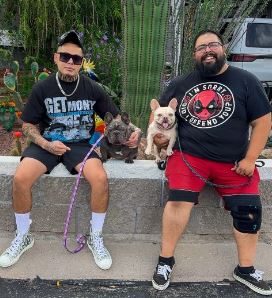What Is Dog Co-Ownership?
You love dogs and you want to be smart about breeding, time, and money. Co-owning a dog lets you share responsibilities, costs, and decisions with another owner—usually a breeder—under a clear dog co-ownership agreement. Done right, it protects the dog, keeps expectations clear, and helps both parties reach their goals.
How co-ownership works
You and a partner both own the dog. You agree—up front—on care, expenses, breeding plans, and who decides what. Most partnerships use a written co own dog breeding contract so you’re never guessing about health testing, stud services, puppy returns, or who pays which bill.
When co-owning a dog makes sense
You want mentorship from an experienced breeder.
You prefer to share costs (health testing, showing, whelping).
You want access to better genetics than you could fund alone.
You have time and a loving home, and your partner provides breeding/show expertise.
Benefits you can expect
Shared costs and workload
Clear milestones (health tests, titles, age/limits for breedings)
Ongoing guidance on nutrition, timing, and puppy placement
Risks to avoid
Vague expectations (“we’ll figure it out later”)
No exit plan if someone moves, divorces, or changes goals
Unclear ownership on registration papers and microchip


What your dog co-ownership agreement should include
Use these headings in your contract so nothing gets lost.
Parties & Dog ID
Your names, legal addresses, AKC/registry number, microchip, color, DOB.Ownership & Decision Rights
Who has primary possession day-to-day? Who authorizes vet care, travel, breeding, and registrations?Care Standards
Housing, exercise, food, insurance (optional), and what “emergency care” authorization looks like.Health Testing & Records
Which tests (e.g., DNA panel, hips/elbows/patellas, cardiac, eyes), who schedules them, who pays, and how results affect breeding.Breeding Plan
Minimum/maximum breedings, age limits, and required health clearances
Who selects studs/approved pairings
Whelping location and who manages the litter
Advertising, screening buyers, and puppy contracts
Money
Stud fees, progesterone/AI/C-section costs, puppy income split, and timing of payouts.Titles & Showing (if applicable)
Who handles training/handling fees, travel, and ownership display on promotional materials.Puppy Back / Pick Rights
How many pick(s) the breeder receives (if any), and whether that’s per litter or total.Transfer, Retirement & Spay/Neuter
When full ownership transfers, what happens at retirement, and who pays for spay/neuter.Default & Dispute Resolution
What counts as a breach, cure period, mediation/arbitration venue, and fee recovery.Death, Loss, or Major Illness
Who decides treatment/euthanasia, how insurance (if any) pays out, and what happens if the dog is lost.Registration & Microchip
Both owners listed. Primary caretaker listed as main contact on the microchip.
Copy-ready co own dog contract template (starter)
Use this as a starting point. Have an attorney adapt it to your state. ( Download Here)
Is co-ownership the same as guardianship?
Not exactly. Guardianship usually means you house the dog for a breeder who keeps full ownership. Co-owning a dog means you both hold ownership and decision rights under your contract.
Who pays for emergencies?
Decide this in your dog co-ownership agreement. Many partners agree emergencies are paid by the possessor, then reconciled per your cost-share.
Can I use a free co own dog contract template?
Yes—as a draft. Always tailor the terms to your situation and local law, then have an attorney review. (Free Download)
What if we disagree on a breeding?
Your co own dog breeding contract should name the decision-maker (or tie-breaker process) before the heat cycle starts.
